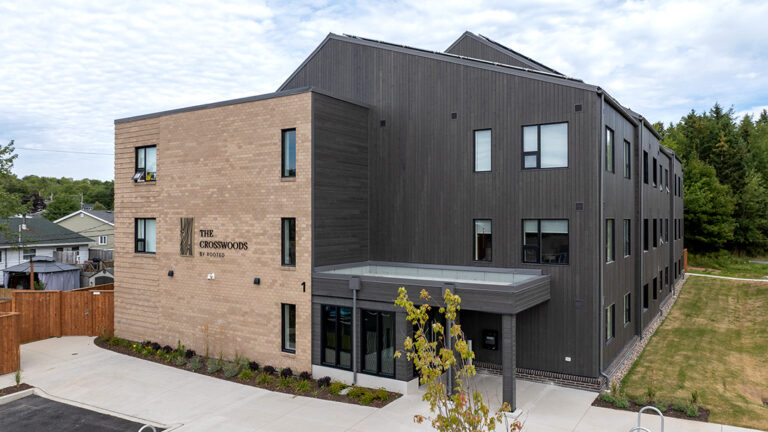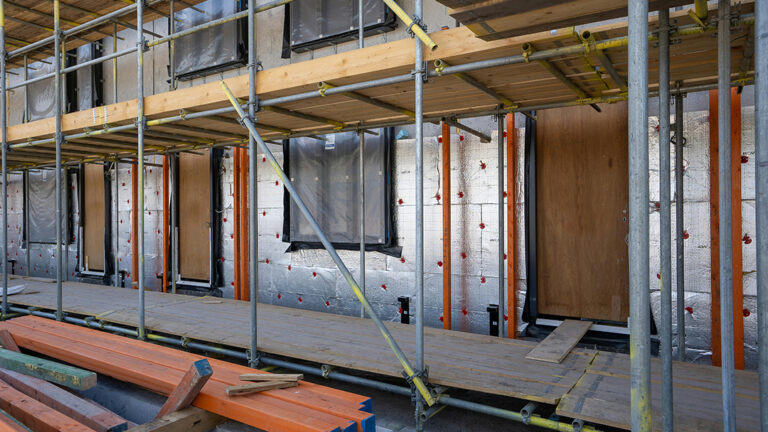Last month, the Canada Mortgage and Housing Corporation (CMHC) released its annual rental market report. The conclusions are not surprising: the crisis is getting worse, as we have been observing for several years now. We suggest a summary of the main conclusions of this year’s report, which we put into perspective with the solutions offered by the community housing sector:
- Demand exceeds supply in 2022
- Vacancy rates are at record lows
- Vacant units’ rents are rising at an alarming rate
- Low-income tenants are finding it increasingly difficult to access housing
- The role of the community sector: 2 approaches to address the crisis
Demand outpaces supply in the rental market in 2022
The findings of the report bring into focus what has long been known: the supply of rental housing is not keeping up with demand, and while construction is gradually increasing, it is unable to meet the needs of Canadian households. This is driven by a series of factors such as population growth and the fact that ownership is unaffordable for many households.
The demand for rental housing is the strongest in Canada’s largest cities, where rental costs are the highest, the supply of rental units is most limited. As a result, there are fewer housing options for tenants in Canada’s rental housing system.
Purpose-built rental apartment vacancy rate is at the lowest level since 2001
The national vacancy rate for purpose-built rental apartments dropped from 3.1% to 1.9% in 2022, ending a two-year trend of stability. In many cities, vacancy rates are at near-historic lows, with some cities witnessing rates at or below 1%, such as Gatineau (0.8%), Vancouver (0.9%) and Halifax (1%).
According to the report, the increase in demand is driven by several factors including population growth, migration, and a slower transition to homeownership with a growing number of renters who are unable to buy a home due to high housing costs and more expensive financing options. Additionally, demand is affected by students returning to on-campus learning and the arrival of new residents which are recovering toward pre-pandemic levels.

The new low levels of vacancies proportionally affect the rent increases in most centres. 2-bedroom purpose-built apartments rent increased an average of 5.6% in 2022, a new annual high which is well above the 1990 to 2022 average of 2.8%. This can only exacerbate the challenges faced by low-income renters.

Alarming hikes for vacant units’ rents and overall rental costs
Another striking data observed in the report is the difference between rent prices for occupied units and vacant units, the latter being much higher in 2022. For instance, asking rents for vacant units are on average 43% higher than those paid for occupied units in Vancouver.
On a national level, data in the report show that 2-bedroom apartments which had tenants’ turnover saw an increase of 18.3% in average compared to 2.9% for apartments that did not. Rents are being increased considerably when a unit is turned over between tenants, while the rent cost for occupied units is often controlled by rental caps put in place in several provinces. This trend is happening all over Canada, even in rural and non-urban centres not covered by the report where the raises in rent anecdotally reported are as high as the data provided by the surveys. As a result, rental housing is getting much more expensive.
At a community level, this should serve as a warning because rapid rent increases directly affect rates of homelessness. For instance, a 2013 study by leading homelessness researchers in the United States examined predictors of homelessness per 10,000 adults in poverty. The study found that rent increases were the strongest predictor of homelessness, and that for every $100 increase in median rent, homelessness increased by 15% to 39%, depending on the urban or rural jurisdiction.

The problems of housing accessibility are increasing
The vulnerable are always the most affected by any crisis. The deterioration of affordable rental housing stock impacts low-income renters the hardest. The report points out this fact by showing that in communities like Winnipeg and Saskatoon renters in the lowest income quintiles can only afford between 4 and 7% of the available housing stock. These data confirm the urgency of addressing affordable housing challenges faced by low-income households.
Two models to address housing accessibility issues
The Community Housing Transformation Centre believes that the community housing sector has a central role to play in addressing the crisis through promoting innovative models to reinforce the sector and to fight hiking rents and housing affordability issues.
The Plancher initiative: by the common good, for the common good
The Centre believes that part of the solution is to substantially expand the non-market housing stock. The community housing development ecosystem, as we know, it is not adequately equipped to achieve this goal. However, we believe it has the resources to do so, at least in the provinces where it is best structured.
By collaborating on holistic solutions and pooling resources, the community sector can spearhead housing transformation in Canada.
This is what Quebec’s community housing sector is trying to accomplish with the Plancher pilot project. Launched in early 2022 by the Centre, it consists of uniting the actors of the sector to transform the assets of the community housing stock into financial leverage for the acquisition and development of non-market affordable housing units. The initiative aims to create a new ecosystem that will simplify and accelerate the development of community housing across the province. As a result, tens of thousands of additional units could quickly become available on the rental market.
Eventually, based on the experience acquired in Quebec, the Centre would like to work with the community sector in other provinces to replicate the model.
An agile and effective approach to funding the sector
Investing in the community housing sector’s ability to fulfill its purpose is a necessity that is unanimously recognized in many circles. The National Housing Strategy identified this as a priority and, as part of its initiatives, CMHC is funding the Centre to act as a catalyst for the growth of community housing so that it can better meet the needs of Canadians.
The originality of this approach is that it gives an organization founded and managed by front-line organizations the mandate to contribute to the development and implementation of funding programs. This allows the government to tap into the expertise, skill, energy and commitment of these groups. This is a significant advantage, as it provides the program with the agility to conduct dynamic allocation and rule-making processes that are adjusted based on their rapid validation on the ground.
While traditional programs respond to industry needs within one to two years (sometimes longer), the Centre’s programs do so within months. It’s a successful model that is proving itself in Nova Scotia with the Community Housing Growth Fund (CHGF). Established in October 2022, the initiative has been so successful that the Nova Scotia government has announced plans to double the fund just a few months later, in December 2023.



